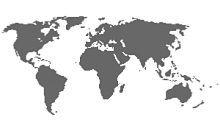
The International Monetary Fund (IMF) has cut its forecast for world growth, and slashed its call for Canada even further, amid the ongoing effects of low commodity prices.
According its economic outlook released on Tuesday, the IMF predicts just 1.0% gross domestic product (GDP) growth for Canada this year, down 0.5 percentage points from its July forecast. For 2016, the IMF outlook sees growth accelerating a bit to 1.7%, although this is also down 0.4 points from its July call.
“In commodity exporters, lower commodity prices weigh on the outlook through reduced disposable income and a decline in resource-related investment. The latter mechanism has been particularly sharply felt in Canada, where growth is now projected to be about 1% in 2015, 1.2 percentage points lower than forecast in April,” the outlook says.
Overall, global growth is expected to be moderate and uneven. The outlook forecasts global GDP growth at 3.1% this year, which is down 0.2 percentage points from the IMF outlook in July, before ramping up to 3.6% in 2016. The IMF forecasts lower global growth compared to last year, with a modest pickup in advanced economies, and a slowing in emerging markets, primarily reflecting weakness in some large emerging economies and oil-exporting countries, the outlook says.
“Six years after the world economy emerged from its broadest and deepest postwar recession, the holy grail of robust and synchronized global expansion remains elusive,” says Maurice Obstfeld, the IMF economic counsellor and director of its research department, in a statement.
The major forces shaping the outlook, the IMF outlook says, include China’s shift from export- and investment-led growth and manufacturing, towards consumption and services; the related fall in commodity prices; and the anticipated increase in U.S. interest rates.
“Despite considerable differences in country-specific outlooks, the new forecasts mark down expected near-term growth marginally but nearly across the board. Moreover, downside risks to the world economy appear more pronounced that they did just a few months ago,” Obstfeld adds.
Among those downside risks, the IMF outlook points to the risk of further weakness in commodity prices; a sharper-than-expected slowdown in China; a further increase in financial market volatility; a stronger U.S. dollar; and, the prospect of increased geopolitical tensions in areas such as Ukraine, the Middle East, or parts of Africa, which could harm confidence.
In this environment, “with the risk of low growth for a long time”, the IMF outlook says that policymakers need to try to raise actual and potential growth. “In advanced economies, accommodative monetary policy continues to be essential, alongside macroprudential tools to contain financial sector risks,” the report notes. “On the fiscal side, countries with room for fiscal stimulus, such as Germany, should use it to boost public investment, especially in quality infrastructure.”
The scope for policy easing varies considerably across emerging market countries, the IMF outlook says, “depending on macroeconomic conditions and sensitivity to commodity price shocks, as well as external, financial, and fiscal vulnerabilities.”